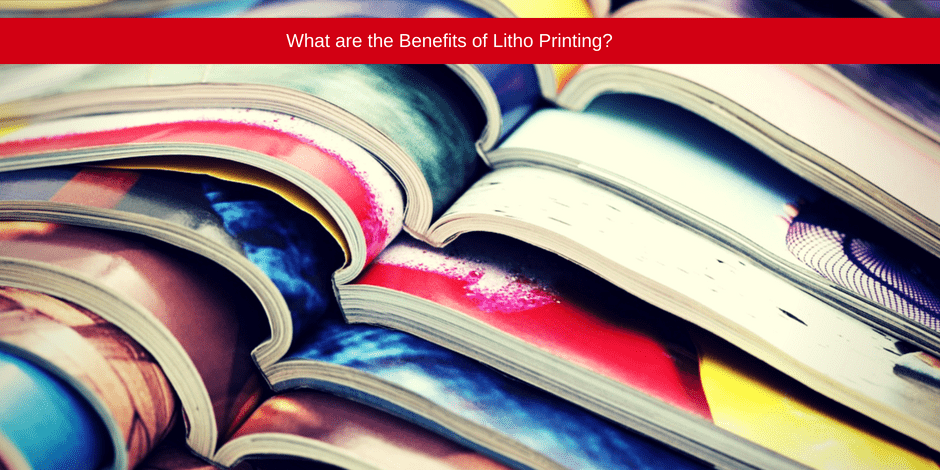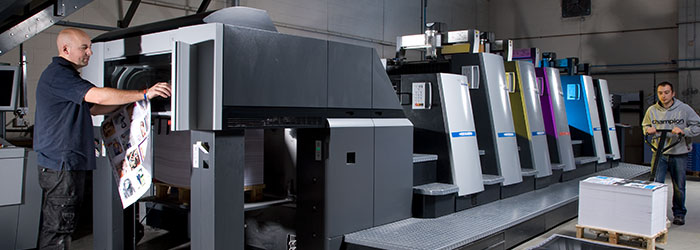litho printing Techniques Used by Expert Print Shops
litho printing Techniques Used by Expert Print Shops
Blog Article
A Comprehensive Overview to Comprehending Litho Printing Strategies
The globe of litho printing, a technique originating from the late 18th century, is a remarkable mix of background, development, art and science. Stay with us as we trip into the captivating realm of litho printing.
The Historic Evolution of Litho Printing
The historical trajectory of litho printing, an essential development in the realm of interaction, is a fascinating tale of human ingenuity. The procedure evolved with the advent of the rotating press, which considerably enhanced efficiency. Each stage of litho printing's advancement showcases humankind's relentless pursuit of effectiveness and quality in aesthetic interaction.
Deciphering the Science Behind Litho Printing Inks
Progressing in the expedition of litho printing strategies, the emphasis currently changes to the science behind litho printing inks. The composition of these inks, their drying out procedure, and color mixing strategies develop the backbone of this complicated art kind. Comprehending these aspects is vital to understanding the craft and attaining the desired print outcomes.
Structure of Litho Inks
In lithographic printing, the essential role of litho inks can not be overemphasized. The make-up of litho inks differs relying on its purpose, but normally, they contain two primary components - lorries and pigments. Pigments, the color-providing components, are finely ground particles suspended in the automobile, a fluid that lugs the pigment onto the printing surface. The car is a complex blend of materials, solvents, and oils, which influence the ink's drying time, adhesion, and gloss. Furthermore, various additives exist to enhance specific homes like circulation, drying out, and resistance to environmental results. Each part plays a vital part in the final print's top quality, making the accurate formula of litho inks an elaborate science.
Ink Drying Refine
From the structure of litho inks, focus transforms to the fascinating process of ink drying. 2 primary techniques are made use of in litho printing: oxidative drying and absorption. Absorption, on the various other hand, includes the ink leaking right into the paper fibers, which is a much faster process however can lead to less dynamic colors.
Shade Mixing Methods
While the drying out procedure plays an essential role in litho printing, the scientific research of color mixing methods holds equal importance. The scientific research behind litho printing inks additionally takes right into account the openness of the ink, which impacts exactly how shades overlay and mix.
The Art and Design Elements in Litho Printing
Litho printing takes a breath life right into art and style through its unique components. The procedure involves producing an image on a lithographic sedimentary rock plate or metal plate with a smooth surface area. The picture is then printed onto a medium, typically paper, by transferring the ink from the plate. What collections litho publishing apart is its ability to reproduce complex styles with high integrity, making the result practically identical to the original artwork. This is attained with the use of different line strategies such as cross-hatching, stippling, and hatching, which enable an array of tonal impacts. Litho printing suits a range of colors, allowing artists to produce dynamic and dynamic prints. This combination of accuracy and convenience makes litho printing a preferred choice for several artists and developers.
Modern Applications of Litho Printing Strategies
Litho printing techniques have discovered substantial use in the modern commercial sector. Its influence and value proceed to expand with the introduction of brand-new developments and technologies in the field. This area will certainly discover these contemporary applications and the transformative role they play in the printing industry.
Commercial Litho Printing Makes Use Of
In today's electronic age, one might question the relevance of traditional printing approaches. Yet, litho printing continues to be a critical component of the commercial industry. High-volume printing jobs, such as the production of books, newspapers, and packaging, depend on litho printing for its capacity to deliver exceptional photo top quality and expense effectiveness. The procedure, which includes transferring a tattooed image from a plate onto a rubber covering and afterwards to the printing surface, check that uses unparalleled uniformity. This makes it excellent for work requiring a huge print run. Litho printing also offers a wide shade spectrum, above that of digital printing. This makes it the go-to option for projects that demand vibrant, top quality color reproduction.
Advancements in Litho Printing
Pressing the limits of standard strategies, contemporary innovations have actually fueled a host of innovations in litho printing. One prominent development is electronic litho printing, which combines the merits of digital technology with litho's top quality outcome. These developments great post to read emphasize the enduring relevance of litho printing in the modern-day globe.
Checking out the Process of Litho Printing: Detailed

Obstacles and Solutions in Contemporary Litho Printing

Regardless of the precision and tradition that litho printing happily promotes, it is not without its collection of modern obstacles. Digital litho printing allows for economical short runs and simple modification, dealing with the concern of variable information. Hence, while there are obstacles, the litho printing industry is proactively adapting to meet them head-on, guaranteeing its importance in the future.
Conclusion
In final thought, litho printing, with its abundant history and scientific details, holds a considerable area in the print industry. The future of litho printing hinges on its capacity to adjust to these transforming demands, verifying its enduring worth in a progressing market.

Report this page